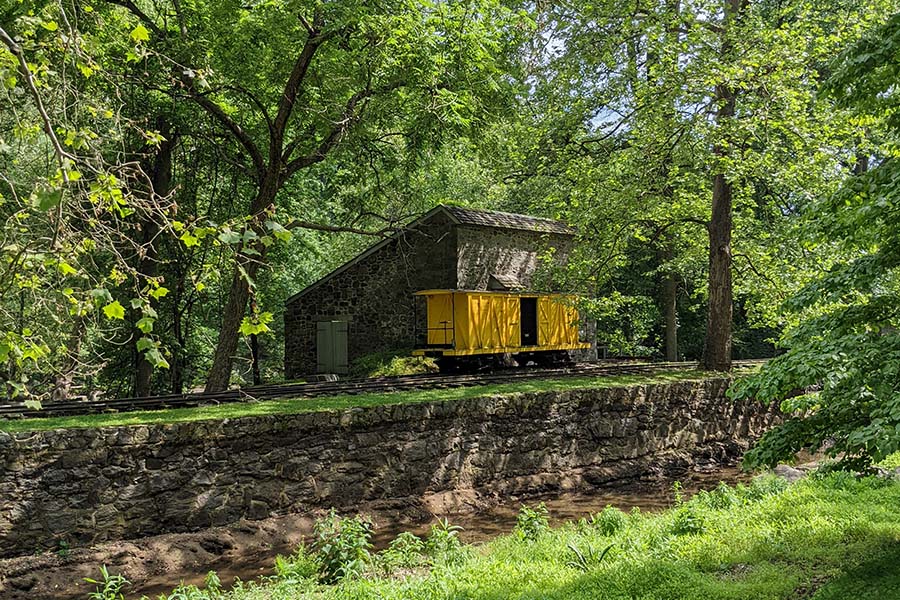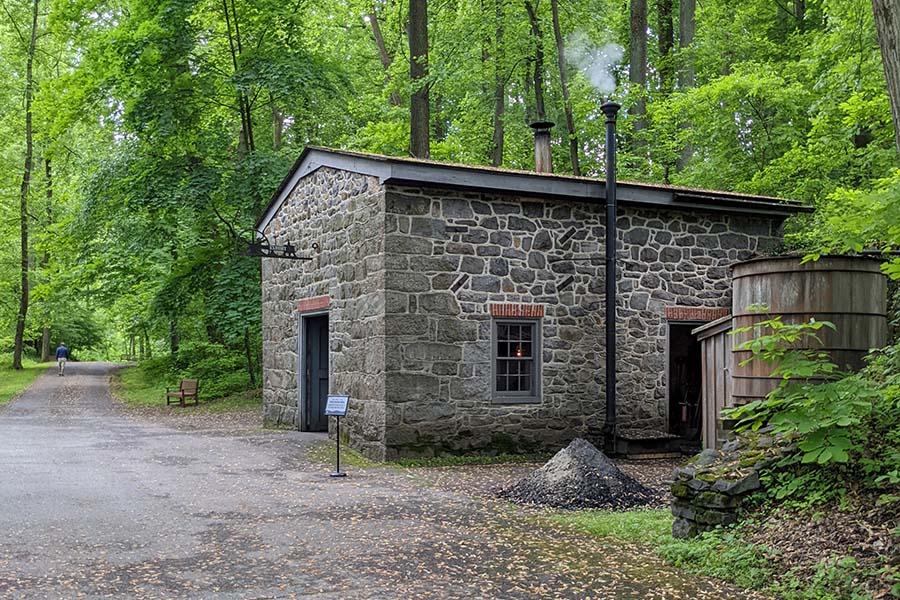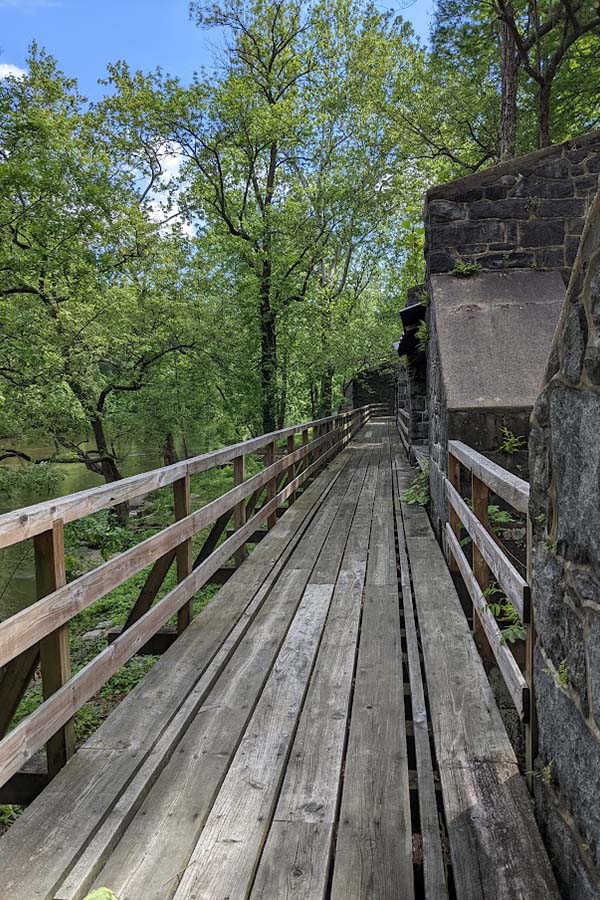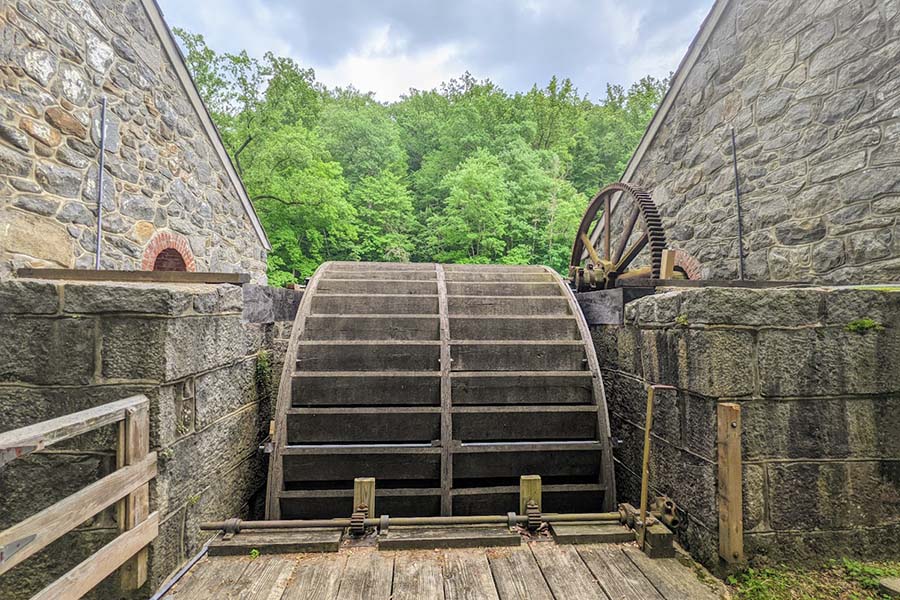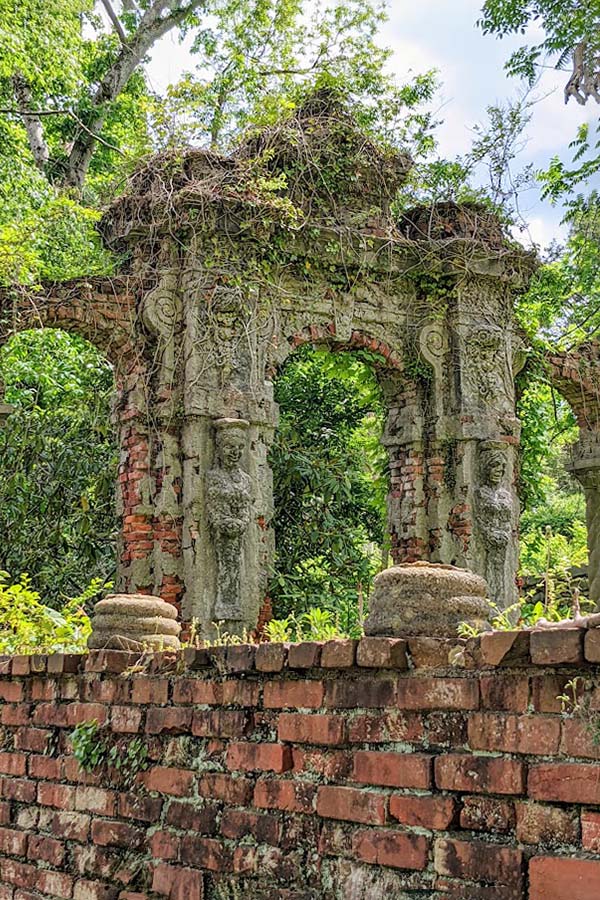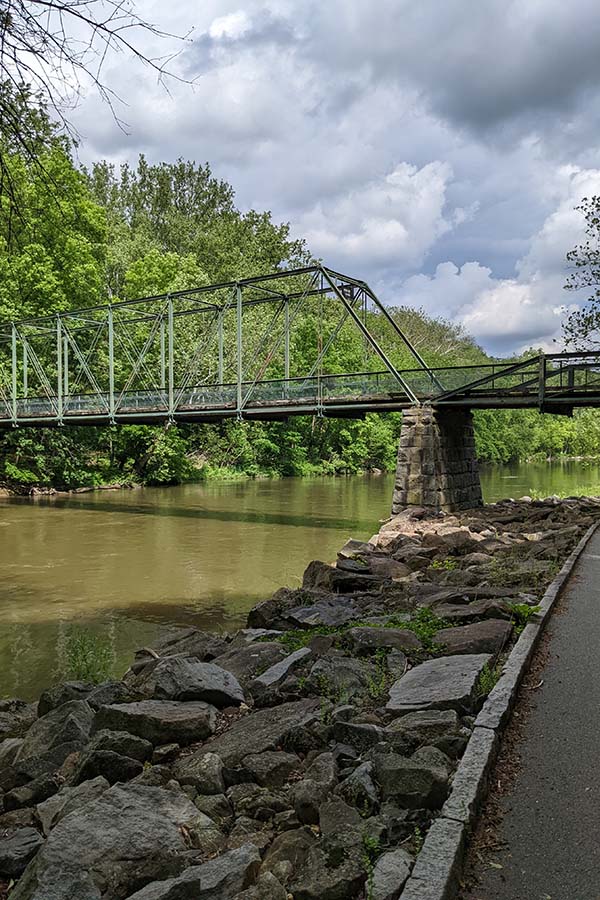Just outside of Wilmington, Delaware, not far from Philadelphia, the Brandywine Valley is Du Pont Country. Sprinkled across the region are a number of impressive homes like the beautiful botanicals at Longwood Gardens and the smartly stately Nemour Estate & Gardens. But they all trace back to a black powder yard and a family home called Eleutherian Mills at what today is known as the Hagley Museum and Library.
This Delaware museum is unique because it offers a little bit of something for everyone. The powder yard is rich in science and technology as well as hands-on demonstrations. Meanwhile, the mansion and the surrounding gardens offer a peek back at the way life was once lived for a privileged few. The Hagley Museum is an enjoyable day trip, not least because so much of it is outdoors under towering trees along the Brandywine River.
A Brief History
At the turn of the 19th century, Éleuthère Irénée du Pont founded a powder mill along the Brandywine River. E.I. du Pont, as he is known, left France during a time of political upheaval and immigrated to America in 1800. In France, he had apprenticed for a noted chemist, Antoine Lavoisier, and worked at a powder works. The experience helped in giving him the hands-on experience and knowledge for what would become his new business venture in America, where he noted that the young country was lacking in high-quality gunpowder.
Within a couple of years of founding the powder mills, E.I. had a home built for his family. The Georgian-style home sits on a hill overlooking both the power yards and the river.
Roughly a decade after opening up shop, du Pont, looking to enlarge his facility, purchased the adjacent Hagley Estate. The new Hagley Yards is commonly thought to be the source of the museum’s name.
Visiting the Hagley Museum
The Hagley Museum can be separated into two sections: the powder yard along the river and the du Pont residence and gardens. Because the residence is nearest to the Library, it’s a good place to start your visit. Along the way, you’ll encounter a few small structures, including a barn that houses antique carriages and wagons.
Hagley Museum Historic Home & Garden
Spread out on nearly two acres in front of the house is the garden. While this is no formal “show” garden, it’s an orderly garden that is active. Young vegetables, fruits, and flowers were happily growing during my spring visit.
The house is not far from the garden, slightly setback and hidden amongst the trees. No one can argue that it is a handsome home and it was in these walls that five generations of the family lived and were raised. Guided tours of the house are included in the price of admission but a time slot should be scheduled in the Library Visitor Center.
du Pont Power Yard
From the house, it is less than a mile walk down (and downhill) to the powder yards, past the former saltpeter refinery. The walk along the Brandwine River is lovely. There is a rather wide meadow between the path and the river, giving wildlife plenty of space to enjoy. Birds are clearly fond of the area. There are remains of stone buildings here and there along the pathway, peeking out as nature tries to reclaim its territory.
Another site along the way is the Crowninshield Garden, a 1920s-era neoclassical garden. Built on terraced ruins, the garden is the project of Louise du Pont Crowninshield and her husband, Francis Boardman Crowninshield. The couple was the last to reside in the home and with the garden, they were inspired by what they had seen in Rome. Unfortunately, the garden is not open for a stroll. You will find yourself, instead, on tiptoe trying to take in what appears to be genuine ruins – crumbling brick archways, mosaic tiles, columns, and other sculptures – put together in an artistic and thoughtful way. From the Crowninshield Garden, if you look up, you get a hint of the family home up above on the cliff.
The powder yard is a self-guided tour with signposts explaining the historical and technical significance of each stop along the way. Some of the buildings, like the machine shop, feature permanent exhibits (such as models of what the working machinery and the landscape would have been like at the time). There are also live talks and demonstrations from staff and volunteers. A black powder demonstration, for example, showed one of the tests used to determine the quality of the powder.
Walking along the Hagley Museum’s powder yard from end to end, you really get to piece together an understanding of how the powder was manufactured, the important role that the river played, and the risks that the workers took on – what seems to modern eyes – relatively primitive technology.
Getting There
As of the spring of 2022, the Hagley Museum and Library is still dealing with a storm that had wide-ranging impacts on the region in September of 2021. As a result, the museum’s library is temporarily serving as its visitor center.
The easiest way to reach this Delaware museum is by car. There is a large field for parking across from the Library. Parking is free. Public transportation is available, but note that the nearest bus stop still requires a significant walk.
Getting Around
The Hagley Museum is very walkable and extremely scenic. For those that can’t or don’t want to walk, shuttle buses ferry visitors around the property.
Perhaps due to last year’s storm, there are some changes at the museum. For example, there is a lack of clear signage on where to go from the library’s make-shift visitor center. Part of this is likely due to the expectation that visitors will use the shuttles. But even the shuttle waiting area is rather informal. This confusion around where is the powder yards is part of the frustration that nearly caused my husband and me to leave only shortly after arriving. But after trying “one more path,” we luckily found the correct trail.
Similarly, the walkways and shuttle paths are shared and narrow – meaning pedestrians frequently have to move off the path to give the right of way to shuttles.
Save this post on the Hagley Museum and Library for later on Pinterest!
All photos, as well as all opinions, are my own.
